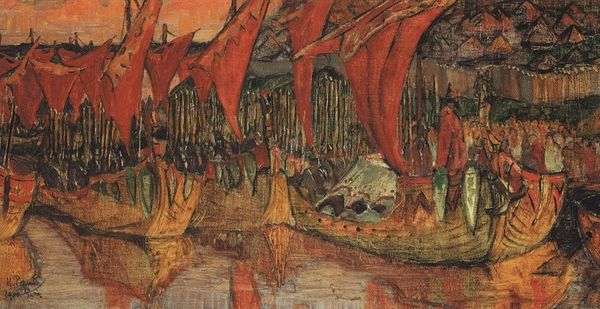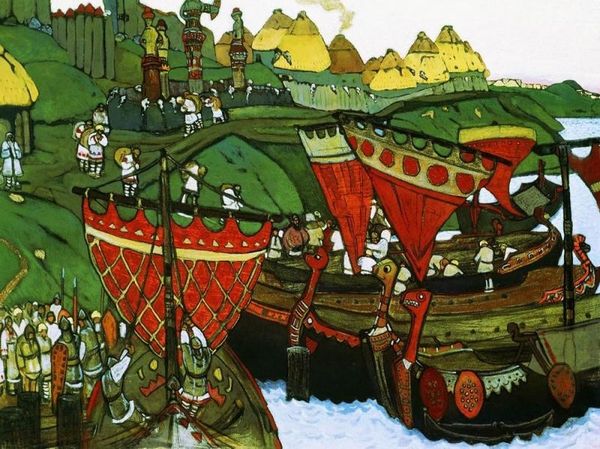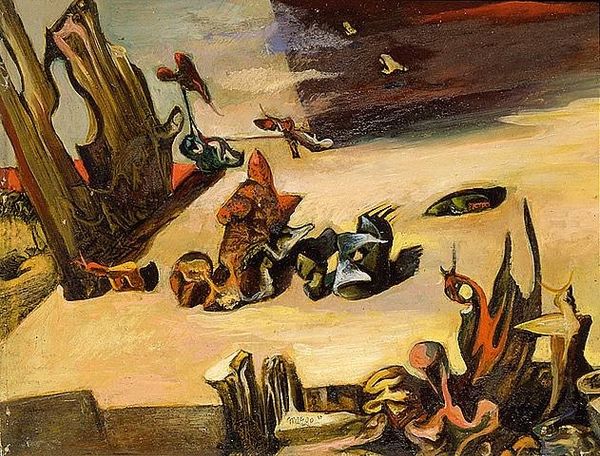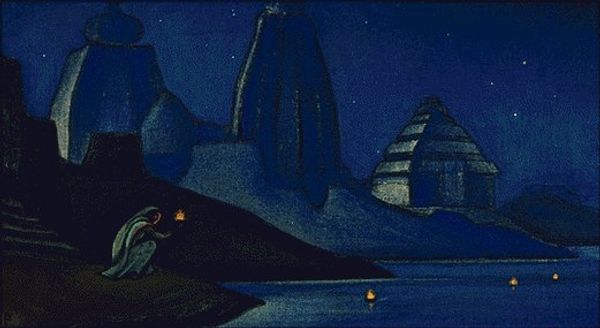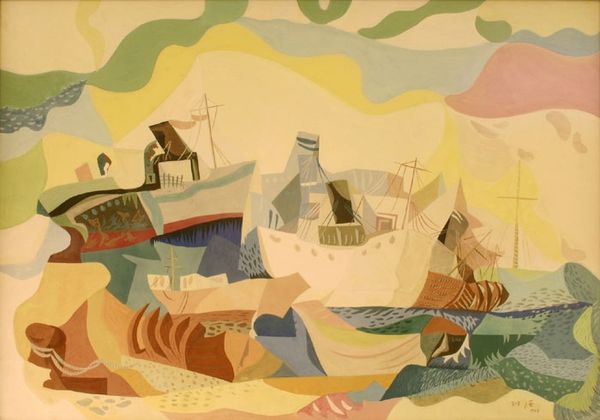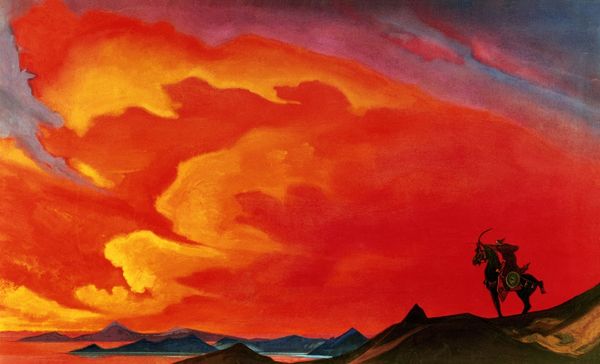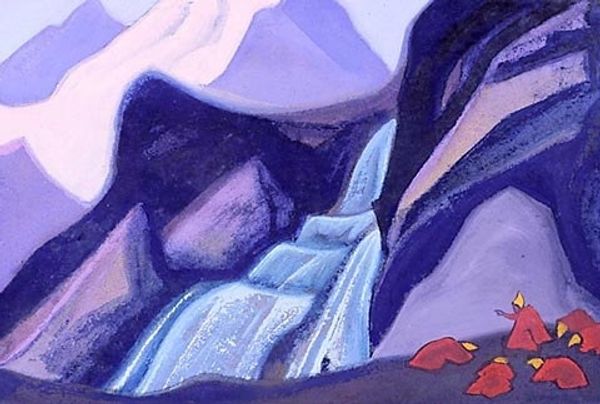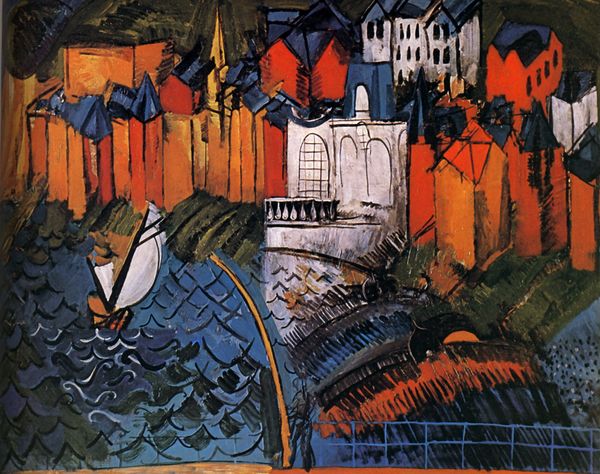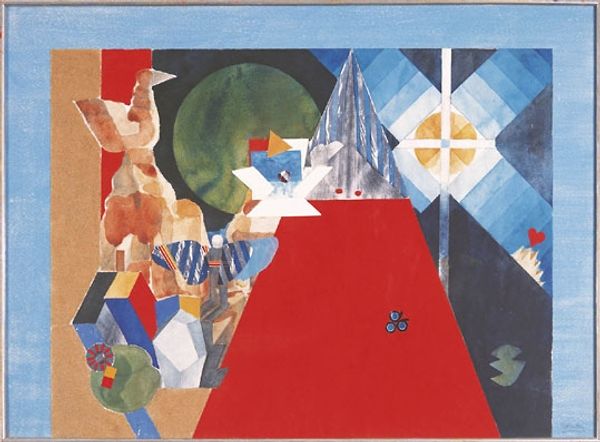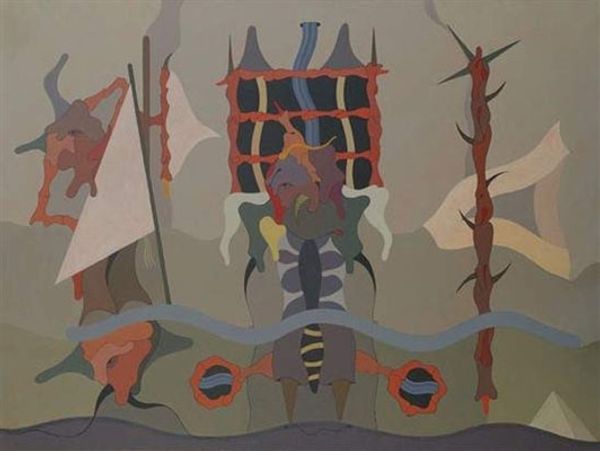
Copyright: Public domain
Editor: Arman Manookian's "Greeting by Chiefs," painted in 1928, it's, well, striking. It feels almost theatrical in its use of bold color, especially that bright orange. I'm curious, what’s your read on this piece? Curator: What jumps out to me are the stark contrasts in material representation. Look at how the indigenous figures, likely laborers, are depicted with simplified forms and raw color, almost reduced to their function within the scene. Then, observe the ship – it’s overloaded with detail, literally carrying the weight of its visual complexity and symbolic importance, gesturing towards the commodification of the "exotic". Notice how those details are only afforded to certain objects. Editor: So, you’re focusing on what each element represents materially and socially? Curator: Exactly. Manookian isn't simply presenting a historical scene. He’s showing us the uneven distribution of visual "wealth," reflecting the colonial dynamic itself. Think about the production of pigment, the labor to construct a ship - it all signifies power. How is value assigned, and who controls its representation? Editor: That makes me think about how even the application of paint – the thick, vibrant swathes versus the more delicate lines – underscores this difference. It’s almost like he’s implicating the very act of painting in the power structure. Curator: Precisely. Consider the surface quality, the evident hand of the artist versus what that suggests about artistic production during that era and whose narratives are privileged through representation. How does the exotic become consumed through the lens of art? Editor: I hadn't considered it that way before. I was initially caught up in the vibrant colors, but seeing it as a commentary on the means of representation, who and what gets represented and why, adds a whole new layer. Thanks. Curator: It's crucial to question the very materials and processes that construct our understanding of history. Glad I could offer that perspective.
Comments
No comments
Be the first to comment and join the conversation on the ultimate creative platform.
